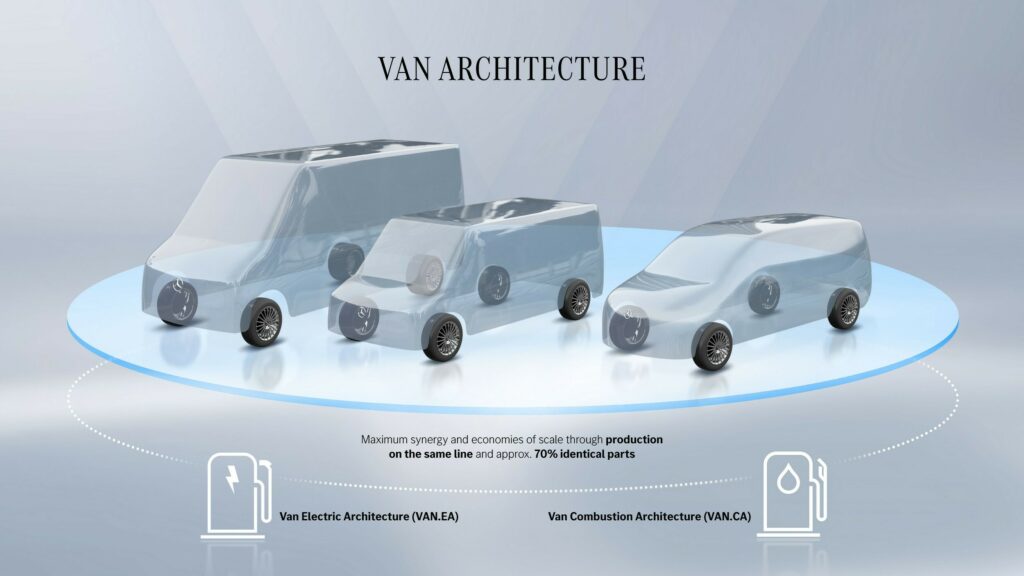- Mercedes-Benz Vans has abandoned plans to go electric-only.
- The company will offer ICE-powered models on a new VAN.CA platform.
- It borrows heavily from the electric-only VAN.EA platform and has 70% parts commonality.
Not long ago, Mercedes-Benz Vans was envisioning a “fully electric future” where all models would be based on the new VAN.EA (Van Electric Architecture) platform. The transition was slated to begin in 2026 and spy photographers have already snapped an assortment of different prototypes.
Fast forward to today and the company is pulling the plug on its electric-only future. In a bid to “meet customer requirements,” Mercedes-Benz Vans is promising to offer an assortment of models with state-of-the-art combustion engines.
More: Mercedes To Roll Out 19 New ICE And 17 EV Models That Will Ditch The Egg Shape By 2027
Since the VAN.EA platform was designed specifically for battery electric vehicles, this means the company was forced to develop a separate architecture. It’s known as VAN.CA (Van Combustion Architecture) and it will rely heavily on VAN.EA.
Mercedes didn’t go into many specifics, but said the platforms share around 70 percent of components. They can also be produced on the same line, which helps to minimize the financial impact from their electric-only screw up.

There’s no word on how much the new platform will cost to develop, but it’s money that Mercedes wasn’t planning to spend. However, with slower than expected electric vehicle adoption, the writing was likely on the wall.
Speaking of which, Mercedes-Benz USA sold 49,573 vans in the United States last year but only 828 of them were eSprinters. The electric van went up for order last February for $71,866. The reception wasn’t enthusiastic, but the 2025 model is far more affordable as pricing begins at $61,180.
With both ICE and EV options, Mercedes-Benz Vans said they’re “securing a competitive market position for the future.” They also noted the two platforms give them a “maximally flexible product portfolio.”























